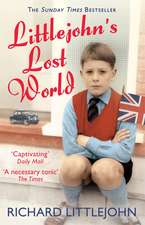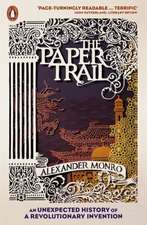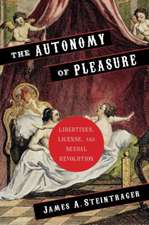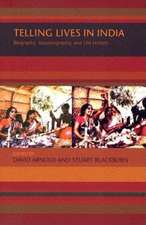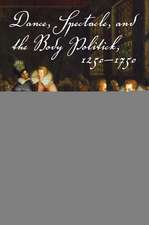Cruel Delight – Enlightenment Culture and the Inhuman
Autor James A Steintrageren Limba Engleză Paperback – 28 ian 2004
Preț: 162.61 lei
Nou
Puncte Express: 244
Preț estimativ în valută:
31.12€ • 32.57$ • 25.90£
31.12€ • 32.57$ • 25.90£
Carte tipărită la comandă
Livrare economică 31 martie-14 aprilie
Preluare comenzi: 021 569.72.76
Specificații
ISBN-13: 9780253216496
ISBN-10: 0253216494
Pagini: 232
Ilustrații: 28 b&w photographs
Dimensiuni: 155 x 234 x 15 mm
Greutate: 0.36 kg
Editura: MH – Indiana University Press
ISBN-10: 0253216494
Pagini: 232
Ilustrații: 28 b&w photographs
Dimensiuni: 155 x 234 x 15 mm
Greutate: 0.36 kg
Editura: MH – Indiana University Press
Cuprins
List of Illustrations
Acknowledgments
Introduction
Part I. The Inhuman
1. The Model of Moral Monstrosity
2. The Paradox of Inhumanity
Part II. Curiosity Killed the Cat
3. Animals and the Mark of the Human
4. The Monstrous Face of Curiosity
Part III. The Bedside Manner of the Marquis de Sade
5. Science and Insensibility
6. The Ethics and Aesthetics of Human Vivisection
Epilogue
Notes
Select Bibliography
Index
Acknowledgments
Introduction
Part I. The Inhuman
1. The Model of Moral Monstrosity
2. The Paradox of Inhumanity
Part II. Curiosity Killed the Cat
3. Animals and the Mark of the Human
4. The Monstrous Face of Curiosity
Part III. The Bedside Manner of the Marquis de Sade
5. Science and Insensibility
6. The Ethics and Aesthetics of Human Vivisection
Epilogue
Notes
Select Bibliography
Index
Recenzii
Yoking Kant and Sade together in this way is questionable. For Kant's categorical imperative requires a universalization which is utterly alien to Sadean freedom to follow desire, no matter how harmful to others. Most ethical systems proposing liberty as the key value have insisted upon reciprocity. Among classic philosophers, only Friedrich Nietzsche celebrates the liberty of the strong to oppress the weak (and indeed associates cruelty and joy). Furthermore, it is not definitive that a naturalistic, sentimental ethics was a dead end and unsustainable. Hume theorized a more sophisticated account of how fellow feeling is selected and universalized in moral discourse than is reflected here. And after Sade and Kant, a powerful philosophy of morality having a basis in natural sympathy was developed by John Stuart Mill. Steintrager is right to argue that cruelty was a problem for sentimental theory, and his revelation of the difficulties theorists experienced in confronting it is valuable, making his book well worth reading. His contention that perceptions of ordinary and scientific curiosity, and the validation of the detached gaze of the professional anatomist as socially useful, offered ways in which eighteenth--century thinkers could solve this problem, is surely part of the answer. But he might also have paid attention to theories of the sublime, and the aesthetic of the gothic, which get a mention only in his short epilogue. Finally, I am not convinced that the Hogarth prints should be read as a critique of science. Did Hogarth really intend viewers of the first engraving in the series to see in the various cruelties being inflicted on animals an analogy with scientific experiment? The practitioners and the audience in the fourth print, in which Tom Nero's hanged body is being dissected, are not presented as attractive persons: but did Hogarth mean us to perceive in them a further stage or form of cruelty? It is not easy to be cruel to the dead.---- William Sta
Notă biografică
James A Steintrager
Descriere
Examines how cruelty and moral monstrosity changed the Enlightenment's understanding of human nature


